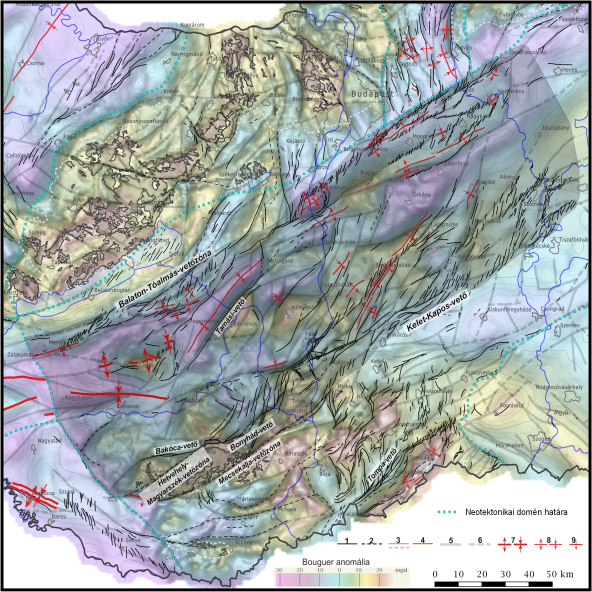Deformations of the neotectonic phase in Hungary
Abstract
The ultimate goal of the research project 2018-2.2.1-NKP-2018-00007, funded by the National Research, Development and Innovation Office, was to create the seismotectonic model of Hungary. One of the key input elements of the established seismotectonic model was the newly constructed, 1:500 000 scaled, national map of the tectonic and atectonic deformations of the neotectonic phase (<6–8 Myr). The present work aims to introduce briefly the new map and the main results of the mapping completed in the frame of the project.
The new map is based on the structural interpretation of 70 3D seismic data cubes and nearly 2900 2D seismic profiles, as well as on the critical evaluation and integration of relevant results published in the neotectonic literature. The main results of the completed country-wide mapping with respect to previous neotectonic maps are summarized below:
i) A more detailed and accurate representation (actual position, extension and geometry) of young, near-surface structures (faults and folds) than in previous studies.
ii) Definition, characterization and depiction of the different types of faults and folds.
iii) An important novelty of the map is the definition and accurate country-wide representation of major pre-Pannonian deep-seated faults (so-called „root zones”) in the context of neotectonic deformation using the availabe seismic dataset, as well as literature data. The combined representation of „root zones” with shallow-level neotectonic structures significantly contributes the better overview and understanding of the local and regional structural context.
(iv) The geometric relationship between near-surface and deep-seated („root”) structures clearly indicates that the formation of neotectonic faults is due to the reactivation of pre-existing faults (predominantly associated with Oligo-Miocene extrusion or Miocene rifting) all over the Pannonian basin, as also indicated by previous studies.
v) A more detailed and country-wide definition and characterization of neotectonic structural domains based on deformation style and patterns.
vi) Interpretation of Late Pannonian/Pliocene kinematics and stress field based on observed neotectonic fault pattern on a country-wide scale.
















